Concrete preparation: solution mix. ingredients and
No construction is complete without the use of concrete. At a minimum, you will have to fill the foundation with it, how to build walls and ceilings with a maximum. Of course, there is always the possibility of ordering a ready-made solution, but this is not always acceptable.
You may not be satisfied with the price or quantity of the mixture offered by the manufacturer. Therefore, it does not hurt to know all the subtleties of its preparation on its own, which we will consider in this article.
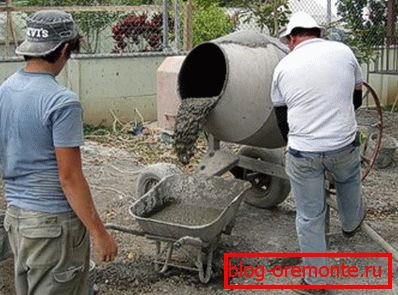
General provisions
The reasons for the popularity of use are fully justified, since the following qualities are inherent in it:
Virtues
- High strength characteristics. Cement, gravel and reinforcement endow the structure with incredible resistance to mechanical stress and load bearing.

- Moisture resistance. It is successfully used even for arranging concrete pools.
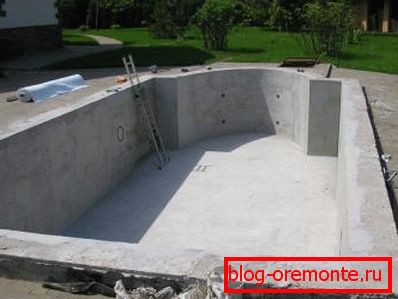
- Frost resistance. This refers to the number of freezing and thawing cycles that a material can transfer without being destroyed. The weakest solution has an F50 ratio, the use of special additives can increase this figure to F300 and higher.
- Variety of classifications. Along with classic heavy concrete, light ones are used, which have much lower thermal conductivity and lower weight due to the use of blowing agents or porous aggregates.
- Durability. Reinforced concrete will serve you for at least fifty years.
- The possibility of making their own hands at home.
disadvantages
Like any other building material, concrete has its weak points.
But in his case, they can be overcome by using other fillers or special additives.
- High thermal conductivity. Heavy classic concrete, the creation of which is used as a coarse aggregate gravel or crushed stone, is not able to keep warm. But if you use expanded clay, polystyrene foam or blowing agents to increase the porosity of the finished material, you can achieve a sufficiently high thermal insulation performance, however, to the detriment of the strength of concrete products.

- The possibility of concreting only in the summer. This is due to the fact that water used as a catalyst for cement crystallizes at minus temperatures and cannot perform its functions.
Tip: if for any reason you need to pour concrete in the winter, it is recommended to use additional special frost protection additives or heating with an electric cable. So you can avoid freezing of the liquid, and the setting of the cement stone will be successful.
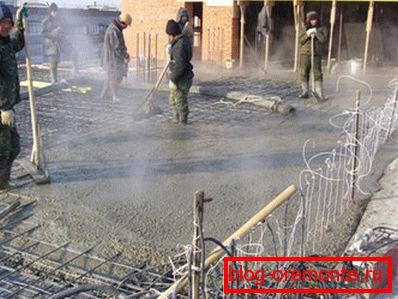
As you can see, the negative sides are few and easily eliminated.
Kneading solution
Now let's figure out how to properly prepare concrete:
Ingredients
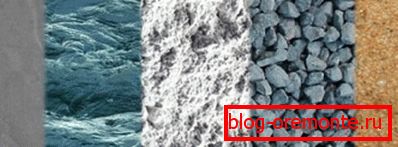
The cost of making concrete by hand is much lower than ordering it in production. For this you will need the following components:
| Title | Purpose |
| Cement | This is the main element that provides the strength of combining large and small aggregates. |
| Sand | Fills the pores, reducing the moisture absorption coefficient |
| Gravel | Endows the finished array with the necessary strength characteristics |
| Water | It is a catalyst for the formation of cement stone. |
The ingredients listed in the table are excellent for mixing concrete for foundations where extremely high compressive strength is required. To increase it, additional reinforcement is also used. But when building walls, a higher priority arises for a material's ability to keep warm.
For this, instead of crushed stone for concrete, other large aggregates are used:
- Expanded clay. It is made by swelling and roasting of clay granules. It has lightness and low thermal conductivity. How to cook lightweight aggregate? Just like the usual solution, mixing the aforementioned insulation material with cement and sand.
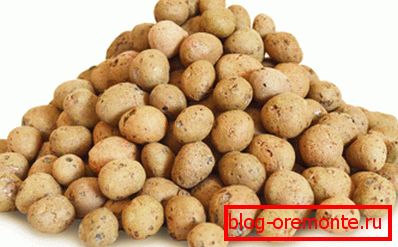
Tip: for mixing all the components, use a concrete mixer. It will allow you to achieve the necessary uniformity and speed up the work, allowing you to avoid the appearance of cold seams.

- Styrofoam. Very light and very warm material. Polystyrene balls are immersed in the cement mixture, which can be easily purchased at a specialty store.
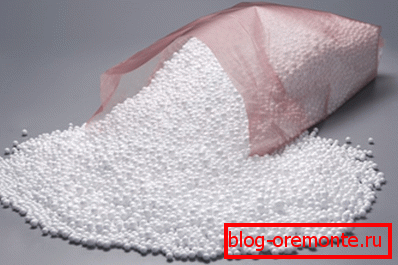
- Foam. The addition of special blowing agents allows a significant increase in the number and size of pores. As a result of this chemical reaction, foam concrete is formed, endowed with a low coefficient of thermal conductivity and low weight. Such a solution is usually used to create blocks undergoing autoclave treatment to increase the strength properties.
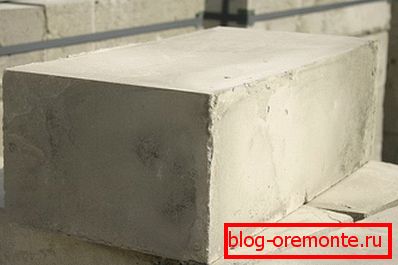
Proportions
Before you prepare concrete, you should decide on the class you need for your case and carefully read the recommended ratio of mixable components, which directly depend on the type of cement used.
The consumption rates of materials for the manufacture of concrete using a binder brand M400:
| Brand of concrete | Mass ratio, kg | Volumetric ratio, l | The output of the finished solution in the case of using 10 kg of cement, l |
| 100 | 10:46:70 | 10:41:61 | 78 |
| 150 | 10:35:57 | 10:32:50 | 64 |
| 200 | 10:28:48 | 10:25:42 | 54 |
| 250 | 10:21:39 | 10:19:34 | 43 |
| 300 | 10:19:37 | 10:17:32 | 41 |
| 400 | 10:12:27 | 10:11:24 | 31 |
| 450 | 10:11:25 | 10:10:22 | 29 |
In this case, the instruction suggests adding two times less than the volume of the entire dry mix. That is, in our case, then for the manufacture of hundredth brand of concrete will need 39 liters of water.
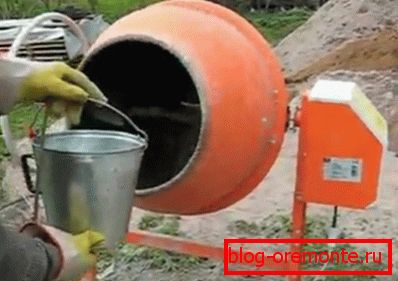
Tip: if the sand used is wet, it is recommended to reduce the amount of water added. Otherwise the mixture may turn out to be too liquid.
Consumption rates for the creation of a concrete solution using cement M500 significantly differ from the previous proportions:
| Brand of concrete | Mass ratio, kg | Volumetric ratio, l | The output of the finished solution in the case of using 10 kg of cement, l |
| 100 | 10:58:81 | 10:53:71 | 90 |
| 150 | 10:45:66 | 10:40:58 | 73 |
| 200 | 10:35:56 | 10:32:49 | 62 |
| 250 | 10:26:45 | 10:24:39 | 50 |
| 300 | 10:24:43 | 10:22:37 | 47 |
| 400 | 10:16:32 | 10:14:28 | 36 |
| 450 | 10:14:29 | 10:12:25 | 32 |
As you can see, a higher grade binder gives a higher yield of ready-to-use mixture. It should be noted that the preparation of heavy-duty concrete M450 in your home is not useful, it is designed for high-rise buildings, bridges, subway walls and military bunkers.
Knowing the correct proportions, it remains only to load all the components into the concrete mixer and turn it on. When the solution becomes a homogeneous substance, it can be poured into formwork or other prepared forms.
Conclusion
Concrete is a very practical building material. With its help, foundations are poured, walls are built, auxiliary structures are created. Knead the appropriate solution at home will help you knowledge of the necessary ingredients and their proportions, which are listed above.
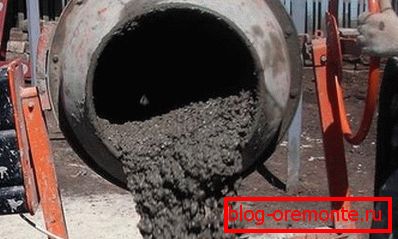
The video in this article will introduce you to additional materials.
Good luck to you concreting!